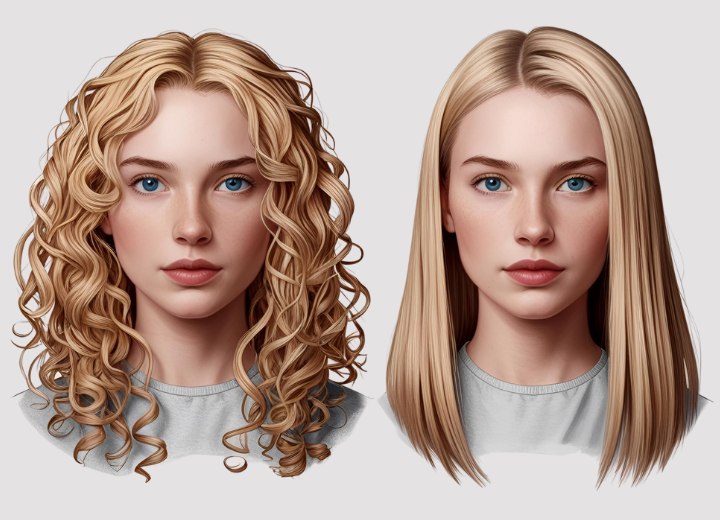Safely Straightening Very Curly Hair

Q: I'm a hairdresser with a client who has very curly blonde hair and wants it chemically straightened. What is the safest, least abrasive method to accomplish this? I would appreciate any advice.
A: Assuming your client has naturally blonde, curly virgin hair (untreated by chemicals), you have several options that balance effectiveness with hair health. Each method has different benefits, maintenance requirements, and potential impacts on the hair.
For a more affordable option, Thio-based straighteners work effectively for many clients. This method is essentially a reverse perm where the hair is combed straight while the thio solution breaks the hair's disulfide bonds. Position your client so her hair can hang as naturally straight as possible during processing. Limit processing time to 20 minutes maximum to prevent damage, followed by thorough rinsing and proper neutralization to reform the bonds in the straightened position. Afterward, a deep conditioning treatment is essential to restore moisture balance and seal the cuticle layer. Popular thio-straightening kits from brands like Ogilvie and EasyStraight include conditioning steps designed specifically for this process.
In recent years, keratin treatments have gained popularity as a gentler alternative. While technically not permanent straighteners (they don't break hair bonds), premium keratin treatments can significantly reduce curl and frizz for 3-4 months by coating the hair shaft with protein. Many stylists recommend these for clients concerned about damage, especially if their hair has been previously colored or is naturally fine or fragile. Modern formulations like Cezanne and Keratin Complex offer formaldehyde-free options that minimize health concerns for both stylist and client.

Regardless of which method you choose, several preparatory steps are crucial:
Conduct a thorough consultation assessing hair health, porosity, elasticity, and previous chemical treatments. Even if your client claims to have virgin hair, subtle damage from heat styling or sun exposure can affect results. Perform a strand test on a small section before committing to full application. This allows you to evaluate processing time and potential results without risking the entire head. Set realistic expectations with your client. Very curly hair may not achieve bone-straight results with certain methods, and some texture might remain, particularly with gentler treatments.
For aftercare, advise your client to wait 48-72 hours before washing with sulfate-free shampoos and to use heat-protectant products before styling. Recommend weekly deep conditioning treatments to maintain moisture balance, as chemically straightened hair tends to become drier over time.
Remember that if your client's hair shows signs of significant existing damage or excessive porosity, it might be wiser to suggest alternative styling methods rather than chemical treatments. Sometimes a skilled blowout technique or investment in high-quality heat styling tools represents a safer path than chemical processing for compromised hair.
©Hairfinder.com